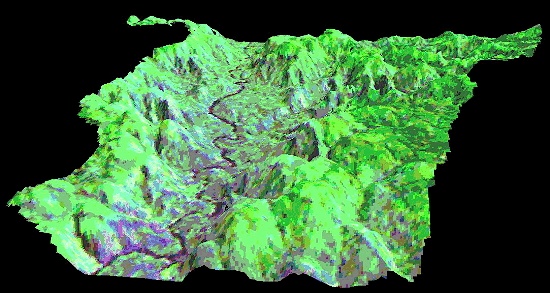Scientists Uncover Lost Maya Ruins – from Space
NASA and University of New Hampshire scientists
are using space- and aircraft-based "remote-sensing" technology to uncover
remains of the ancient Maya culture using the chemical signature of the
civilization's ancient building materials.

Remains of the ancient Maya culture, mysteriously destroyed at the height of its reign in the ninth century, have been hidden in the rainforests of Central America for more than 1,000 years. Now, NASA and University of New Hampshire scientists are using space- and aircraft-based “remote-sensing” technology to uncover those ruins, using the chemical signature of the civilization’s ancient building materials.
[Tom] Sever has explored the capacity of remote sensing technology and the science of collecting information about the Earth’s surface using aerial or space-based photography to serve archeology. He and [Dan] Irwin provided [William] Saturno with high-resolution commercial satellite images of the rainforest, and collected data from NASA’s Airborne Synthetic Aperture Radar, an instrument flown aboard a high-altitude weather plane, capable of penetrating clouds, snow and forest canopies.
In 2004, the team ground-tested the data. Hiking deep into the jungle to locations guided by the satellite images, they uncovered a series of Maya settlements exactly where the technology had predicted they would be found. Integrating cutting-edge remote sensing technology as a vital research tool enabled the scientists to expand their study of the jungle.
The cause of the floral discoloration discerned in the imagery quickly became clear to the team. The Maya built their cities and towns with excavated limestone and lime plasters. As these structures crumbled, the lack of moisture and nutritional elements inside the ruins kept some plant species at bay, while others were discolored or killed off altogether as disintegrating plaster changed the chemical content of the soil around each structure.
“Over the centuries, the changes became dramatic,” Saturno said. “This pattern of small details, impossible to see from the forest floor or low-altitude planes, turned out to be a virtual roadmap to ancient Maya sites when seen from space.”
Bravo!
Posted: Sat - February 18, 2006 at 10:21 AM